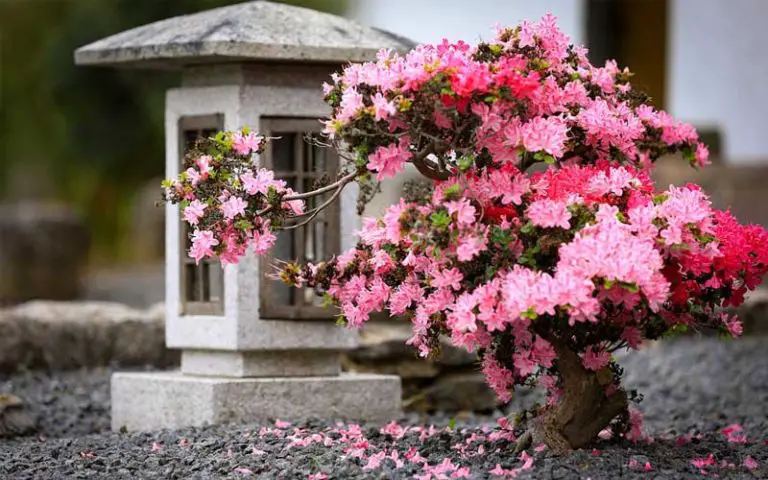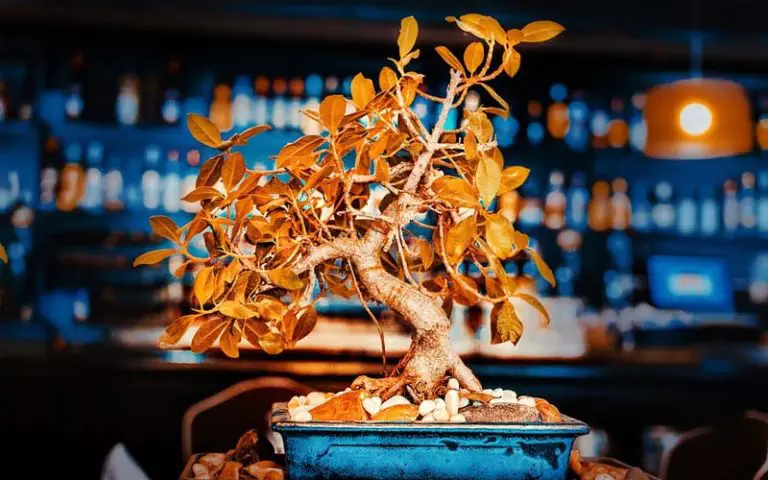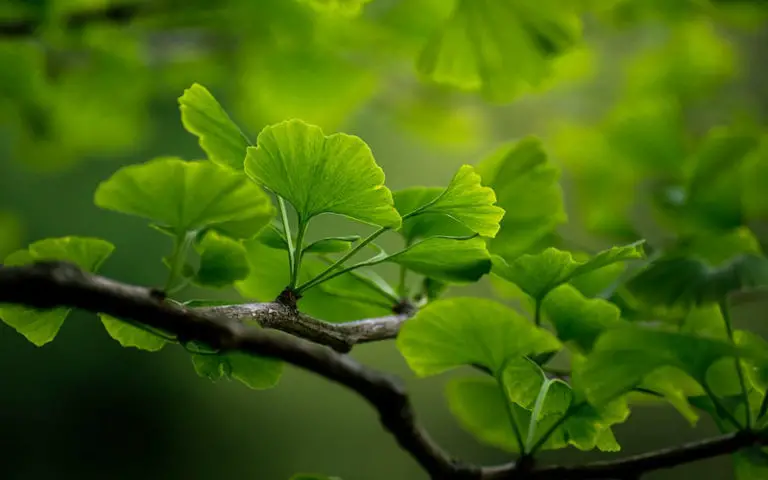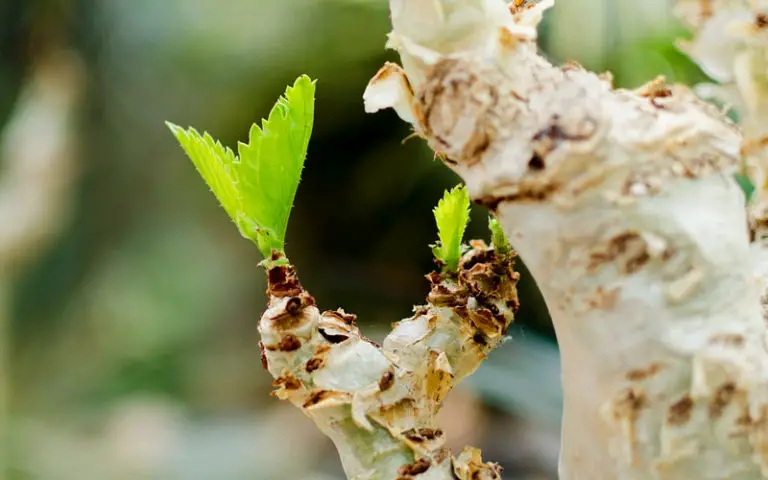Most Popular Bonsai in China

For those that don’t know, the art of growing miniature landscapes and trees in China is called penjing. Bonsai lore teaches us that it’s older than Japanese bonsai, started by Buddist monks who wanted to bring nature into their temples. There are three main penjing styles, but the focus in this article is on the species that are popular in the country.
Here’s what you can look forward to in this article:
Here’s what you can look forward to in this article:
01
02
03
04
05
06
07
The Bonsai Culture in China
‘Pen’ refers to the small container, while ‘jing’ means scenery. Basically, the term roughly translated is ‘tree in a pot.’ Many believe that this ancient art has been around for more than 1300 years. It was only in 1100 AD that Japanese students received a few as gifts, starting the bonsai culture. The 1900s saw it spread to the rest of the world.
Bonsai in China is used for zen and meditation, providing a calming atmosphere. You liberate your mind and spirit from negative energies while placing all your focus on these amazing trees. By making arrangements with rocks, roots, and foliage, you are passing on a piece of yourself into the beautiful landscape.
While many people attempt to recreate nature, Chinese enthusiasts try to replicate the soul. There are two cosmic elements in nature, namely, the yin and yang. The balance, rhythm, and drama of life are revealed in the art of bonsai.
We aren’t merely referring to the tree and the style. How you place the bonsai in the pot, the decorations, the bends, any waterways, the color, the size: these all reflect the energy that you put into the display. Everything needs to have a balance, even if you show the roots or expose specific cuts in the bark.
It’s not simply a tree in a pot. It’s a critical balance that restores your lifeforce.

Most Popular Bonsai In China
Now that you have some idea of how China views bonsai, we’ll reveal the top bonsais that enthusiasts love to grow in the country. They may not be local trees, but most species originate from Asia in some form or another. After this section, we’ll look at specific indigenous species.
Pines
There are several pine trees worldwide that Chinese enthusiasts love growing as bonsais. For instance, the Scots Pine is one of the top ones to make many lists and is welcome in any home. These trees can endure multiple climates, making them incredibly hardy and sustainable.
Their needles have dark green sheens, but you may find some species with blue tints. There are some pine trees that are native to China, so you wouldn’t have to import them from overseas. The Chinese Red Pine is one example, which also provides timber for the land.
Juniper
Both Japanese bonsai and Chinese penjing are fond of junipers. Some scholars believe that the original trees that inspired the first bonsai culture were junipers. It’s even become a cult classic, featuring in many Hollywood movies as the ultimate genus to grow as a miniature landscape.
You’ll see plenty of ancient Chinese paintings that depict the juniper in various styles, such as cascading and slanting. They’re popular for the unique scent and green needles that group together before shooting out. It’s an impressive tree to have as a bonsai, but it requires tremendous care and effort throughout all the seasons.
Spruce
The spruce genus is the third class of conifers to make our list, mostly because they grow so well in Asia and other countries in the Northern Hemisphere. They have green or blue-green needles that whorl and many bonsai enthusiasts love owning at least one spruce species.
While anyone in China can import spruce bonsai trees from overseas, it does have a selection of homegrown species. As a matter of fact, it’s common for anyone outside the country to try and grow Chinese spruce due to its beauty and sheen. For example, the Dragon Spruce grows in several Chinese regions and is favored as one to develop into bonsai.
Paperbark Maple
Where the Japanese have a maple tree you may recognize as a popular bonsai, the Chinese have the Paperback Maple. Its primary source of attraction is the bark that appears to peel off the trunk like paper. It presents a unique appearance you won’t often find on other bonsais.
The fruit are paired samara that contain two seeds within the wings. When they drop, they tend to float in the wind like helicopter blades until they rest in a secure location. The yellow flowers also offer a powerful display in spring and summer if you keep the bonsai healthy.
Rockspray Cotoneaster
Cotoneaster horizontalis may be unfamiliar to many enthusiasts worldwide, but it’s popular as a bonsai in China and Ireland. The primary reason is due to the rich, red berries that it bears in winter, adding a new color to the standard green and brown appearance. It grows so well in these two countries that many botanists consider them invasive.
The flowers also put on a stunning display, varying between white and pink. As a bonsai, you’ll want a beautifully thick trunk with dense foliage on the top, preferably as a formal upright. If you want to try advanced methods, it also serves well as a shohin, which is shorter than the usual bonsai height.
Indigenous Trees Grown as Bonsais
Now that we’ve covered some popular bonsais in China, we’ll show you a few local species that you can also develop into miniature trees. They may not be as famous as the list above, but there are nurseries and online stores that sell them if you know where to look.
Golden Larch
Pseudolarix kaempferi is a conifer in the pine family that has outstanding foliage. Unlike the evergreens in the conifer order, the larch is actually a deciduous tree. While the needles are green in spring, they turn into a beautiful orange/yellow hue in autumn that makes it a stunning attraction as a bonsai.
Chinese Elm
The Chinese elm is possibly one of the most popular species overseas to grow as a bonsai. Perhaps less famous in its home country, there are still many stores that sell them to eager growers. It has beautiful green leaves that’ll stay healthy all year round if you look after it.
Dove Tree
Also known as the handkerchief or ghost tree, this species has gorgeous white flowers that should remain small on your bonsai if you prune properly. It’s rare to find it grown as a bonsai, but there are exceptional cases where it has been done. Just don’t expect to find many in online stores.
Chinese Red Pine
Pinus tabuliformis is a pine tree that’s found in many Chinese regions, but you can also see them in Korea. The evergreen tree extends to a flat crown when it becomes an adult, giving it a unique appearance. Some botanists believe that Henry’s Pine is a variation of this one.
Yunnan Cherry
Prunus yunnanensis is a cherry tree found in Yunnus, one of the Chinese provinces. While you’ll love the purple fruit, it’s the stunning flowers that put on a display. As with the tree, the bonsai is ornamental and will form an outstanding part of your collection.

The National Tree of China
Ginkgo biloba is the official national tree of China, a species that stretches back thousands of years. Some botanists state that it’s the oldest surviving species on earth. Fossils dating back to the time of the dinosaurs have been found, evidence of how it’s stood the test of time.
In Chinese tradition, it stands as a sign of peace and hope. After China presented some to Japan and they survived the bombing of Hiroshima, the country saw it as a symbol of vitality and endurance. Even the leaves are unique, used by some as herbal remedies and tea.
The list of illnesses that reports say the Ginkgo has healed or improved is long. Some of these include dementia, PMS, eye issues, Tinnitus, and muscular degeneration. Doctors state that it could be the species’ antioxidant content that could be the cause of these ‘healing powers.’
Be that as it may, the Ginkgo has long been a favored bonsai worldwide. Countries like the United States, United Kingdom, South Africa, and other love owning one of these among their collection. The primary reason is how far back in history it goes, acting like a relic of the past.
The Art of Penjing
As already mentioned, the Chinese call this art form penjing, while the Japanese named it bonsai in their country. Each one has a different approach and belief for what it stands for in their culture. You’ll find three penjing areas:
- Shumu: Single or more trees in a pot, while the desired shape is achieved by pruning, wiring, or trimming
- Shanshui: A miniature landscape with small trees, rocks, and water within a container
- Shuihan: Combination of land and water with small trees that may contain figurines and tiny building representing an urban scene
Of course, these styles and methods have copied over into other cultures. Besides the Japanese saikei and bonsai, you’ll also find similar techniques with the Vietnamese hòn non bộ. The last one has a greater focus on mountains and islands instead of single trees or clean shapes. It even includes vehicles and figurines in the display.

China Bonsai Associations and Clubs
Since China is the heart of the penjin style, you can imagine how many clubs and associations there are. We’ll look at the official institute of the country and any regional ones. Finally, we’ll mention a few clubs worth noting, as all of them would take up several pages.
Chinese Society of Landscape Architecture Flower Penjing Suiseki Association
The CHSLA is a non-profit national society that pursues the academic and scientific study of landscape architecture. It’s connected to the China Association for Science and Technology, containing presidents, vice-presidents, and other official members. Its primary goal is to establish a recognized discipline for landscaping in the country.
Included in this association is the penjing segment. The group performs similar tasks to the overall society, but only as it relates to the miniature landscapes. It creates rules and policies for various species and styles, providing guidelines for others to follow and keeping true to the culture.
Penjing Branch of China Flower Association
The China Flower Association is a national society that collects specimens from every species to catalog and record them. It also hosts events throughout the year, while meeting with international organizations to share knowledge. It has official members that gather to discuss proceedings and findings, as well as organize new events for the following year.
While not much information is available online about this entity, there’s a penjing branch that caters to the culture of these small trees. It has an exhibit of its collection, while it undertakes similar tasks as the parent society. Members also keep track of some of the regional clubs.
Lingnan Penjing Club
Mr. Wong Chau Shing established this club in 2007 with a few other founding members. It delivers a variant form called Lingnan Penjing, steering clear of conventional bonsai and penjing rules in an attempt to replicate nature as much as possible. It uses a Grow and Clip technique instead of bending and wiring.
Final Thoughts
The Chinese penjing culture is diverse, with a focus on the spiritual aspect instead of merely placing a tree in a pot. It seeks balance in all forms of life while mimicking the beauty of nature. There’s much you can learn from the techniques and philosophies of their styles.







